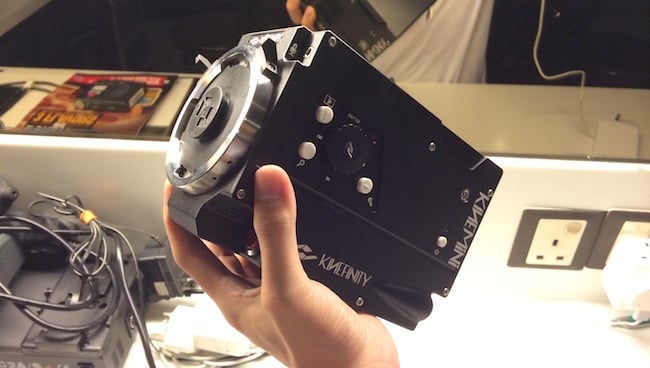
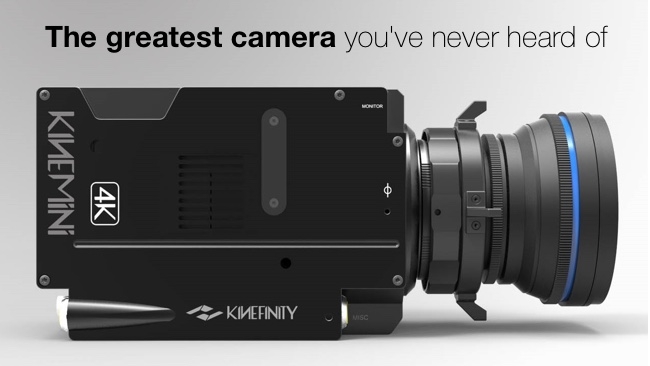 The KineMINI 4K
The KineMINI 4K
Replay: Following all the interest in our NAB story about the TERRA 6K, our first ever profile of China's Kinefinity from November last year. By Miguel Melo Queiroz.
You may not have heard of Kinefinity, but the Chinese camera company has been quietly making a name for itself in the Asian market and has produced some very impressive cameras, notably the KineMINI 4K, along the way.
I own a small media production studio, and I was looking for a cost-effective camera that could still deliver high-end cinema image quality. After some thorough research I chose the KineMINI 4K. This camera is produced by Kinefinity, a Chinese camera manufacturer with a background of making cameras for astronomy, so it had some camera engineering experience when it started producing cameras for filmmaking.
Its first camera, the KineRAW S-35, was presented at BIRTV 2011, but the press and market regarded Kinefinity with some scepticism. Even in 2013, when I bought their second camera (the Kineraw MINI), an unboxing video I made was eventually used by some blogs to show the remaining sceptics that Kinefinity was genuinely real.
Despite this initial scepticism however, the quality of Kinifinity cameras leave nothing to be desired when compared to other brands like BlackMagic or RED. But although well implemented in the Asian market, these cameras don't have anywhere near the same level of Western market penetration (Germany’s HD Video Shop is the main distributor for Kinefinity in Europe).
The Kinemini 4K
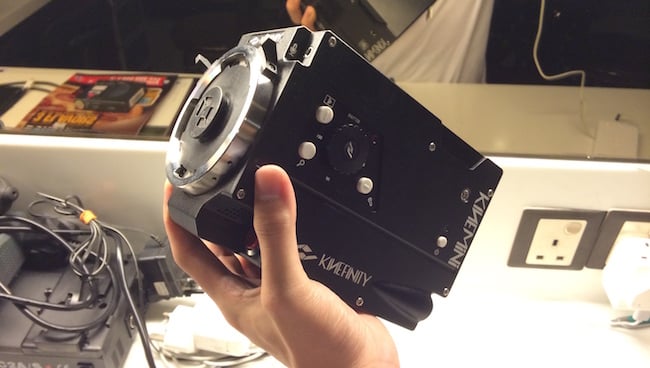
One of the aspects that impressed me the most from day 1 on the KineMINI 4K, was the image quality. It has a 4K Super-35 CMOS sensor and records internally 4K RAW 12bit 444 in Cinema DNG, Cineform RAW (2K) or KRW (Kinefinity's proprietary codec KineRAW), producing beautiful 13 f-stops Dynamic Range footage. You can grade out images of incredible sharpness combined with a very unique organic feel. When compared to footage from RED (which I also love) I'd say Kinefinity cameras can produce images with equivalent sharpness, tridimensionality and dynamic range but with a distinctive organic film look. I'm not sure precisely how Kinefinity achieves this as this relates to their own colour science, sensor architecture, OLPF Filter, IR/UV Filter, etc... But the image quality in KineMINI 4K, was definitely one of the deciding points in my choice.
There are complaints that this camera doesn't provide a lighter codec recording, with higher compression for faster types of post workflow. But this camera is for creative heavy-weight filming, despite its light-weight dimensions and price. This is not a camera for "run n gun" news or events. If I'm shooting for Fiction or even Doc-Fic style, I prefer to stick with the creative freedom that RAW provides me with... Something I wouldn't sacrifice for the speed that higher compression allows. But not all RAW codecs provided by this camera are equal. Just like RED has its REDCODE RAW codec, Kinefinity has the KINERAW (.krw) codec, which provides visually lossless compression, resulting in more manageable file sizes.
Into the details
The KineMINI is bundled with one of two Mount options:
A built-in Active EF Mount with a lock-type mounting system similar to a PL Mount, which allows for Electronic Iris control on most Canon EF lenses.
KineMOUNT: A proprietary PL-like Lens mount offering the possibility to mount in it various mount adapters, sold by Kinefinity: Active Canon EF, Nikon F, PL, B4 and OCT-19 Bayonet.
For those who already own a huge collection of EF Canon lenses, the Active EF built-in mount may be the right choice. But for people intending to use a greater variety of lens brands, the KineMOUNT is definitely the way to go. When you choose the KineMOUNT option and then use an Active EF adapter, because it is not built-in you will need a special cable to connect your camera to the EF mount adapter.
Both Kinefinity cameras (KineMINI and KineMAX) run on an open source Linux operating system called KineOS, currently in its 4.0 version.
You can upload as many user-defined 3D LUTs to the camera, as you like. This way you can use the same LUT to monitor and playback your shot and then for post production. The LUT used for monitoring is then dumped into the RAW clip folder (Cinema DNG metadata, for instance). This has obvious workflow advantages by helping with on-set lighting and scenography work. You may even switch LUTs instantly while shooting. It supports 3D LUT from 8x8x8 up to 33x33x33. The camera also comes with its own built-in LUTs.
Apart from shooting in Cinema DNG (4K) and Cineform RAW (2K), you also have the option to shoot in Kinefinity's proprietary codec KRW (4K), also called "Sports Mode". This codec seems to use 3:1 compression and is visually lossless. Shooting in KRW codec addresses file size and rolling shutter issues.
It has an average frame size of 4.5MB at low ISOs compared to 13MB for the Cinema DNG 4K but, at high ISOs this grows to over 6MB per frame because of the increased grain. This means you can record up to 45mins in a 240GB SSD Card.
As with many other CMOS cameras, Rolling shutter skew in 4K on the KineMINI is quite noticeable, although no worse than on the A7S, NX1 or 1D C. Shooting in KRW codec however, practically eliminates Rolling Shutter. When shooting in KRW codec, you can also generate in-camera proxy recording (CineForm mov) for playback and off-line editing. The KRW Codec can be transcoded into Cineform RGB444, using Kinestation - Kinefinity's proprietary transcoding software bundled for free with Kinefinity cameras.
Sensors and recording media
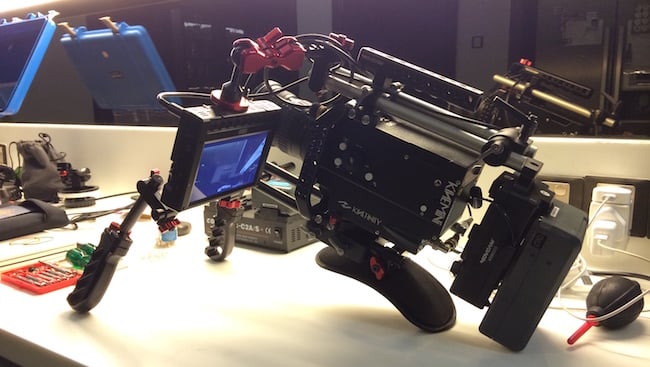
In earlier firmwares, noise used to be present in the deepest blacks throughout the entire ISO range. This was dramatically improved in its latest firmware update. Currently, in low light conditions the KineMINI is clean up to ISO 800 but from ISO 1600, it starts to get too noisy. However, the KineMINI has Exposure Index control, which shifts dynamic range to shadows or highlights depending on which you're trying to prioritise (shadows in low light for example).
Sensor-Crop Mode (to Super-16mm) results in 2K resolution but it's different from the (also available) option of shooting 2K in S-35 mode. Cropping the sensor to S-16 while shooting 4K, keeps a full 1:1 pixel readout within the sensor cropped area, whereas shooting 2K in S-35 sensor mode, uses a different debayering method. Please note that this is also different from shooting 4K in S-35 and then downscaling it to 2K in post, which has other advantages in terms of bit depth and image detail.
Additionally, in S-16 Sensor-Crop mode you can use lenses usually suitable only for Super-16 cameras, like S16mm PL cine lens or broadcast B4 mount lens... Or you can double the focal length of any S-35 or Full-Frame lens. Finally, in Sensor-Crop mode you can also shoot higher frame rates than the hardware would usually allow.
The camera supports 1.33x, 1.5x and 2x plus other less common squeeze factors. It has a 4:3 (2880 x 2160) mode for cinema standard 2x anamorphic lenses and it even provides in-camera anamorphic de-squeeze for monitoring purposes. Because Anamorphic aspect ratios are achieved through cropping the sides, there is no gain in terms of vertical resolution.
The KineMINI records on SSD Cards with writing speed faster than 300MB/s. In 4K (DCI 4096 x 2160) you get around 12-15 minutes for Cinema DNG on a 240GB SSD. Recording in KRW codec, you get up to 45 minutes on the same 240GB SSD. Comparing this to CFast or Express P2 cards, we're talking about 3 to 10 times cheaper recording media.
Options, ergonomics and connections
The KineMINI is an extremely scalable digital cinema camera solution. You can buy the body at its most basic package and upgrade later as it starts to make sense business-wise., adding 4K, Hi-Speed (up to 100fps at full sensor readout), WiFi, stereo 3D and more.
It follows a minimal design approach. It features an almost cubic body, with the following connectors: 2x HDMI, 1x SDI, 1x 3D/Sync, 2x USB and 1x Headphones Jack. There is a joy-stick knob that provides access to 90% of all camera menus, which makes it a bit hard to master which direction performs which function, often with multiple functions per direction.
It also comes with a detachable DSLR battery Hand Grip, which works with lithium cells, similar to those used by Telsa Motors. The Grip also provides a Punch-in Focus button, an ISO dial and a joystick knob for menus, as in the camera body.
The KineMINI 4K lacks proper audio XLR inputs. It only has a Mono 3.5mm jack connector for sound sync purposes in post. But the recorded audio is unusable beyond that. You WILL need an external recorder, which is a limitation for some types of documentary use.
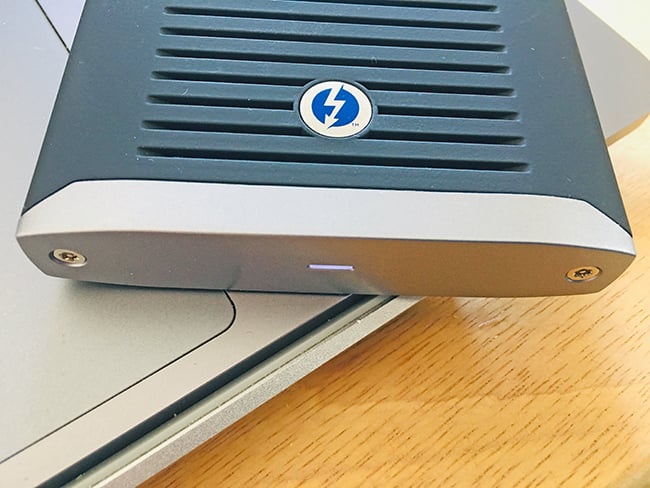
With a body weight of 1.5kg and dimensions of 85mm x 115mm x 150mm, this cinema camera is acceptably small and light. But since it needs to be rigged up for tripod, hand held or shoulder use, including monitor, EVF, etc... The weight soon builds up so, I wouldn't consider this an ideal camera for run ‘n’ gun work, especially considering it lacks internal Image Stabilization and the EF mount version doesn't support IS on Canon lenses either.
Despite the low base price of the KineMINI 4K at around €4,500, the RAW data volumes are high-end cinema territory, like with the RED Epic and Arri Alexa. But even for people needing a faster workflow on average desktop computers, KineStation helps by transcoding RAW to other more manageable file sizes.
This is not exactly an Events camera. I have tried using it with minimal rigging but you still can't compare its handling flexibility to a Sony PXW-Z100 or a Panasonic DVX-200. Especially if proper audio recording is needed. The KineMINI is an ideal light-weight camera for fiction Indie Filmmakers. It's a great alternative to big-name competitors like the Sony FS7, which doesn't even record RAW internally.
For those looking for more, in 2014 the company launched a new line of improved models: The KineMINI 4K and KineMAX 6K, respectively. Developments in processing power, sensor and colour science resulted in improved cameras. Given the fact that the company has a track record of being incredibly responsive to customers, both in China and in Germany, there should be more improvements on the way too.
Article pics: Vince Cheong
Tags: Production


Comments